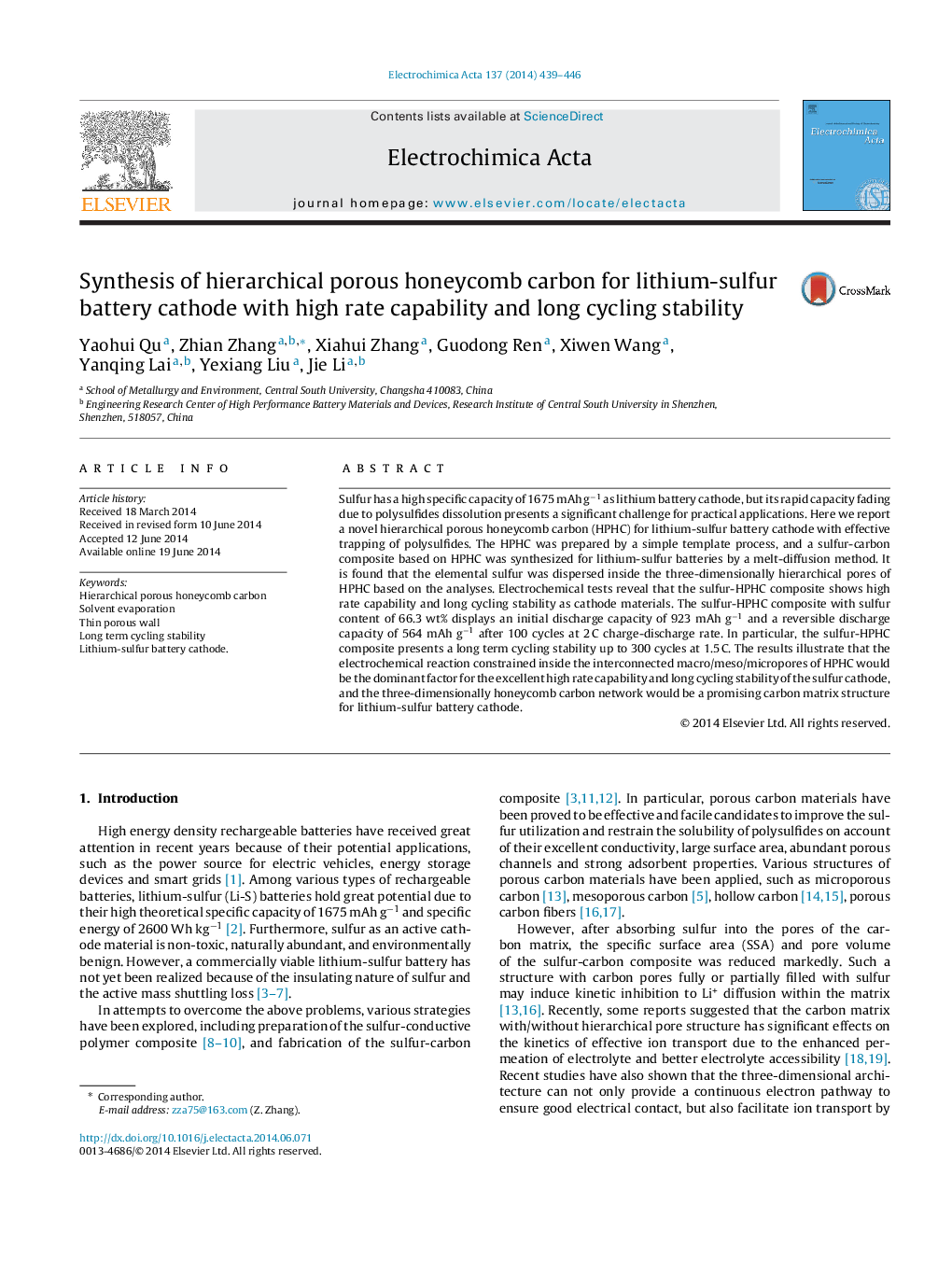| Article ID | Journal | Published Year | Pages | File Type |
|---|---|---|---|---|
| 185594 | Electrochimica Acta | 2014 | 8 Pages |
•A novel HPHC was prepared by a simple template process.•The HPHC as matrix to load sulfur for Lithium-Sulfur battery cathodes.•S-HPHC cathode shows high rate capability and long cycling stability.•The sulfur-HPHC composite presents electrochemical stability up to 300 cycles at 1.5 C.
Sulfur has a high specific capacity of 1675 mAh g−1 as lithium battery cathode, but its rapid capacity fading due to polysulfides dissolution presents a significant challenge for practical applications. Here we report a novel hierarchical porous honeycomb carbon (HPHC) for lithium-sulfur battery cathode with effective trapping of polysulfides. The HPHC was prepared by a simple template process, and a sulfur-carbon composite based on HPHC was synthesized for lithium-sulfur batteries by a melt-diffusion method. It is found that the elemental sulfur was dispersed inside the three-dimensionally hierarchical pores of HPHC based on the analyses. Electrochemical tests reveal that the sulfur-HPHC composite shows high rate capability and long cycling stability as cathode materials. The sulfur-HPHC composite with sulfur content of 66.3 wt% displays an initial discharge capacity of 923 mAh g−1 and a reversible discharge capacity of 564 mAh g−1 after 100 cycles at 2 C charge-discharge rate. In particular, the sulfur-HPHC composite presents a long term cycling stability up to 300 cycles at 1.5 C. The results illustrate that the electrochemical reaction constrained inside the interconnected macro/meso/micropores of HPHC would be the dominant factor for the excellent high rate capability and long cycling stability of the sulfur cathode, and the three-dimensionally honeycomb carbon network would be a promising carbon matrix structure for lithium-sulfur battery cathode.
